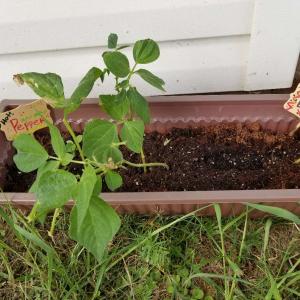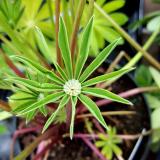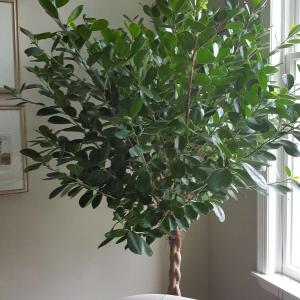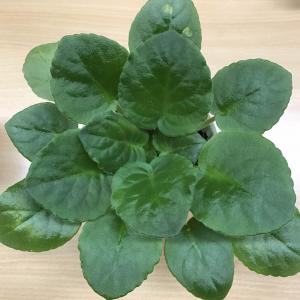成长记
Josh Weesner
2017年06月25日

I new added a "Green Coral Plant - Euphorbia flanaganii" in my "garden"


1
0
求助
elvenking42
2017年06月10日

Help identifying these tiny cacti and succulents? The man that sold them called the flat tall one a Penny Jade but I can't find any reference to that name online. Also I suspect the flat green one with the red trim is a Paddle Plant but its so young I can't tell. I definitely need help identifying the Cacti and the other succulent. Thank you!

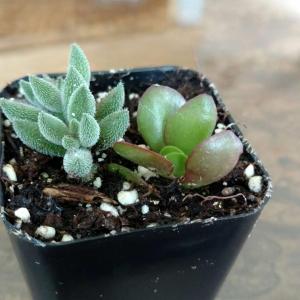


1
1
Ueca:Crassula mesembryanthemoides
Angelasaar
2017年06月01日

What is the plant on the left? its light green and has some pink to it. It has new sprouts at the base. The top leaves show that it also has white stripes to it.


0
0
文章
Selina
2017年05月23日

You don’t need a big yard to have a great garden; it is even possible in smallest of space. Take a look!
If you’re looking to exercise your green thumb but don’t have acres of land, have no fear; a great garden can bloom even in the smallest spaces! All it takes are a few creative techniques, and you can be well on your way to flourishing greenery. Read on to find out some strategic ways to cultivate the most out of your space.
Create Levels and Depth

Create more space by making different levels in your personal patch. In simple words, divide your garden into sections! The division will create an illusion of a large garden– It will also make your garden look lively and interesting.
Do this by planting in tiered beds or adding soil mounds. Also, grow large shrubs or small trees wherever the division is intended. For a more organized look, use stones or lines of grass to separate the different sections of your garden. This is a very good idea for small patios or rooftops.
You can also grow grasses in containers, take a look at some of the best ornamental grasses!
Also Read: Watering grass seed
Another way to add space is by growing your plants vertically. Make a living wall or trellis using wire, bamboo or even pockets of netting. Plants like herbs and vines can easily be transplanted here. If you have a column-like structure, you can make a garden tower that grows florals like orchids.
Also Read: Best Vines for Pergolas
Pro Tip: Care for your vertical plants by targeting their roots when you water them. This prevents wastage from the runoff you’d get when watering from the top.
Food is Your Friend

An edible garden gives you great versatility regarding what you can plant, despite the limited space. Compared to a garden full of wide patches of grass and non-edibles, planting what you can eat requires less water and constant mowing. Plus, edible plants tend to be less picky about where they are planted. And the best thing is the organic harvest that is healthy, fresh, and organic.
Also Read: Best Vegetables to Grow in Containers
Herbs like rosemary, oregano, basil and the like can grow almost anywhere- you can place them in small tin containers, tiered beds and planter boxes. Juicy tomatoes are just one example of a plant that grows well in hanging baskets or pots. Acid-loving plants like blueberries thrive in containers because it’s easier to control the pH level of the soil. Even larger veggies like lettuce will free up space, simply because they are harvested very quickly.
Also Read: Best Fruits You can Grow in Containers
Square Foot Gardening can Be a Solution

Using an excellent technique called Square Foot Gardening, split a soil-filled box into several 1 square foot sections and grow veggies in each of them. Select vegetables that will be productive, but take up less space. A few examples are the crops like carrots, beets, lettuce, and radishes. Examples of medium sized plants are spinach and turnips, while larger ones are heads of cabbages and broccoli.
Also Read: Fast Growing Vegetables
Save Space and Learn Vertical Gardening

Image Credit: BHG
Opt for vertical gardening, especially if you have a veranda, backyard, rooftop or porch, or a BALCONY. The best tip here— Work with your existing furniture and fixtures. Line railings and window ledges with planter boxes or hanging pots. You can grow can annuals in them, or herbs. Strawberries, cherry tomatoes, and a few other edible crops can be considered too.
Also Read: Genius Vertical Gardening Ideas for Small Space
For pet owners, a dog or cat house is a great makeshift shelf for additional plants, as you can simply place additional pots or netting on top.For those who like to grow vertically, you can create a living wall using wooden shutters by anchoring succulents in between each slat.
Once you begin opening your eyes to what you already have and looking for unusual ideas, the possibilities are endless! Cast your eye about, and you’ll find that your greens can grow virtually anywhere.Indoor Gardening

Time to break out the houseplants. Succulents like Aloe and Christmas Cactus are fairly common and extremely hardy (just don’t overwater!). If you’re looking to spice things up, however, throw in micro-greens. If you have a windowsill that receives some sun, you can grow most of the edibles. Learn how to create a windowsill vegetable garden here!
Also Read: How to Grow Ginger in Pots
If you’re willing to scale things up, look for a few dwarf citrus trees, like lemons and oranges. These plants can be grown strategically indoors by using large, well-draining pots placed near a sunny window. When they get nearer to their full size, carefully transfer them to a soil plot or larger pot in your outdoor garden.
Also Read: How to Grow Lemon Tree in a Pot
There are many techniques to getting the most out of your space. Just remember, your space may be limited, but your imagination is boundless! Get creative, and you’ll be surprised with just how swiftly your garden will come alive.
If you’re looking to exercise your green thumb but don’t have acres of land, have no fear; a great garden can bloom even in the smallest spaces! All it takes are a few creative techniques, and you can be well on your way to flourishing greenery. Read on to find out some strategic ways to cultivate the most out of your space.
Create Levels and Depth

Create more space by making different levels in your personal patch. In simple words, divide your garden into sections! The division will create an illusion of a large garden– It will also make your garden look lively and interesting.
Do this by planting in tiered beds or adding soil mounds. Also, grow large shrubs or small trees wherever the division is intended. For a more organized look, use stones or lines of grass to separate the different sections of your garden. This is a very good idea for small patios or rooftops.
You can also grow grasses in containers, take a look at some of the best ornamental grasses!
Also Read: Watering grass seed
Another way to add space is by growing your plants vertically. Make a living wall or trellis using wire, bamboo or even pockets of netting. Plants like herbs and vines can easily be transplanted here. If you have a column-like structure, you can make a garden tower that grows florals like orchids.
Also Read: Best Vines for Pergolas
Pro Tip: Care for your vertical plants by targeting their roots when you water them. This prevents wastage from the runoff you’d get when watering from the top.
Food is Your Friend

An edible garden gives you great versatility regarding what you can plant, despite the limited space. Compared to a garden full of wide patches of grass and non-edibles, planting what you can eat requires less water and constant mowing. Plus, edible plants tend to be less picky about where they are planted. And the best thing is the organic harvest that is healthy, fresh, and organic.
Also Read: Best Vegetables to Grow in Containers
Herbs like rosemary, oregano, basil and the like can grow almost anywhere- you can place them in small tin containers, tiered beds and planter boxes. Juicy tomatoes are just one example of a plant that grows well in hanging baskets or pots. Acid-loving plants like blueberries thrive in containers because it’s easier to control the pH level of the soil. Even larger veggies like lettuce will free up space, simply because they are harvested very quickly.
Also Read: Best Fruits You can Grow in Containers
Square Foot Gardening can Be a Solution

Using an excellent technique called Square Foot Gardening, split a soil-filled box into several 1 square foot sections and grow veggies in each of them. Select vegetables that will be productive, but take up less space. A few examples are the crops like carrots, beets, lettuce, and radishes. Examples of medium sized plants are spinach and turnips, while larger ones are heads of cabbages and broccoli.
Also Read: Fast Growing Vegetables
Save Space and Learn Vertical Gardening

Image Credit: BHG
Opt for vertical gardening, especially if you have a veranda, backyard, rooftop or porch, or a BALCONY. The best tip here— Work with your existing furniture and fixtures. Line railings and window ledges with planter boxes or hanging pots. You can grow can annuals in them, or herbs. Strawberries, cherry tomatoes, and a few other edible crops can be considered too.
Also Read: Genius Vertical Gardening Ideas for Small Space
For pet owners, a dog or cat house is a great makeshift shelf for additional plants, as you can simply place additional pots or netting on top.For those who like to grow vertically, you can create a living wall using wooden shutters by anchoring succulents in between each slat.
Once you begin opening your eyes to what you already have and looking for unusual ideas, the possibilities are endless! Cast your eye about, and you’ll find that your greens can grow virtually anywhere.Indoor Gardening

Time to break out the houseplants. Succulents like Aloe and Christmas Cactus are fairly common and extremely hardy (just don’t overwater!). If you’re looking to spice things up, however, throw in micro-greens. If you have a windowsill that receives some sun, you can grow most of the edibles. Learn how to create a windowsill vegetable garden here!
Also Read: How to Grow Ginger in Pots
If you’re willing to scale things up, look for a few dwarf citrus trees, like lemons and oranges. These plants can be grown strategically indoors by using large, well-draining pots placed near a sunny window. When they get nearer to their full size, carefully transfer them to a soil plot or larger pot in your outdoor garden.
Also Read: How to Grow Lemon Tree in a Pot
There are many techniques to getting the most out of your space. Just remember, your space may be limited, but your imagination is boundless! Get creative, and you’ll be surprised with just how swiftly your garden will come alive.
2
1
文章
Hande Salcan
2017年05月23日


Your garden doesn’t have to be a flamboyant display of bright blooms to be a “garden”. In fact, some of the most interesting gardens in the world rely on foliage to supply color and interest. Green is not the only color of leaves, either. The plant world is full of varied choices full of color, texture and form that can carry off a fun, whimsical space, or the most formal and elegant of gardens. How, and why would we garden with just foliage, not flowers? Glad you asked…

Why?
Foliage gardens require less upkeep, since they don’t require the deadheading that flowering plants do.
Green is one of the most visually calming colors, so planting a garden with foliage tends to make a space worth relaxing in.
Without flowers, a visitor to the garden tends to look closer, appreciating the texture of a leaf, and the variations of color and form. In short, a foliage garden can be a plant lovers dream.
An ‘all foliage’ garden tends to look pretty for a longer season…flowering plants use so much energy – they tend to go quiet a good part of the year when they aren’t in flower.

How to Use Foliage, not Flowers
First of all, the same old rules of design apply to foliage plants.
Plant in groups of 3 or more, and contrast textures, form and colors. This is easier to do in a foliage garden because you don’t have the changing colors of flowers at different times of the year to think about when planting the original design. What yous see, is generally what you will get all season long, with minor exceptions.
Plant sun plants in sun, shade plants in shade.
Plant water loving plants together so they can get extra attention from the hose, and drought tolerant plants farther out where they might not get watered as frequently.
Learn what colored foliage looks best with what. There are all kinds of guidelines out there, but I say this is the place to experiment and learn about basic design by trying different combinations. Some places to start? Yellow/green varieties tend to contrast nicely with gray or purple leaved plants. Variegated or pattered leaves look best next to a solid green for contrast, without looking too busy. Brightly colored foliage, such as reds look best as a focal plantings, with simple leaves nearby to set them off.
Don’t forget about form and texture, which can be very important when you are using just leaves for your garden interest. Large, bold leaved hostas look amazing next to the fern like leaves of a bleeding-heart. A tall vertical ornamental grass may be a great “exclamation point” to break up a bed of low growing sedums. You get the idea. Contrast.

Now that you have the gist of it, try foliage plants for gardens. Or try a small foliage garden in one corner with just three. It’s a great way for any plant lover to really get to know what gardening is all about, and a great design lesson too. I want to thoroughly recommend a book called Fine Foliage by Karen Chapman and Christina Salwitz. This book was a best gardening book Amazon 2013, and with good reason. Great photos, and great advice for foliage combinations. (And no, I don’t get anything for saying that! They also have a great gardening blog as well, with amazing ideas.
So give foliage gardening a go, it’s rewarding and lower maintenance as well.
1
1
文章
Gina
2017年05月22日


If you want to get crafty in the garden, for the garden, or just as a way to keep your thumb green during the winter months, we have the project for you! Hypertufa is a mix of concrete and other elements that is lightweight, easy to work with, can be molded or even carved, and is a perfect project for both beginner and experienced crafters and gardeners. You can create pots, containers, art… ok, we will just let these cool tutorials speak for themselves, ok? BTW… you can even do this on a covered kitchen table with the kids! All you need is a place to let them cure, and you get amazing results for just a little creative effort. Oh, yeah. It’s fun! Our feature photo above is from ‘Martha’. She shows us how to make these bowl hypertufas using a kitchen mixing bowl as a mold! (Can you say dollar store?) These would look great inside or out, and she has a bunch of other variations as well, including a basketweave patterned hypertufa. Check it out!
The basic recipe (Although there are TONS of variations!) From ‘Lowes‘.
1 Part Portland Cement
1 Part Perlite
1 Part Peat Moss
1 Part Water (Can be adjusted to consistency needed for each project)
Mix dry ingredients with gloved hands before adding water. Mix well. Thick oatmeal is a good place to start, thickness wise.
Spray inside of mold with non stick cooking spray.
Pack mixture into mold in whatever way you wish to create sides of containers, art… whatever!
Put inside closed plastic bag for 24-36 hours. This keeps it from drying too quickly, which can cause cracking. Now set in some out of the way place for 2-3 weeks to totally cure. Pop off mold, use a brush or sponge to rub off any imperfections. Done!
Ok, you can see I was pretty casual with the basic directions here. That’s ’cause it’s a very forgiving medium, so have some fun with it! Most of these tutorials have their own take on the directions as well.
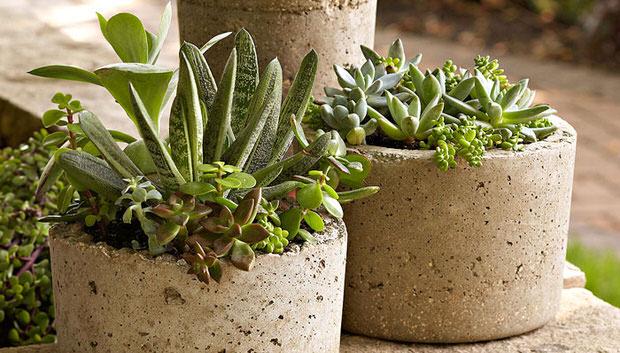
From Pam at ‘House of Hawthornes’, everything about making hypertufa containers. Make sure you take note at what she used for molds… Ok, just trust me, it works!

‘This Old House’ shows us it isn’t just for making containers! Make this hypertufa table! Use their plans for the whole table, or just make the top and use it with an existing base.
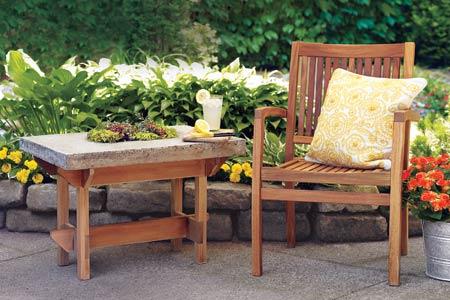
Learn to make a hypertufa planter from ‘Gardeners Supply’. As you can see, they used theirs for a container water garden!
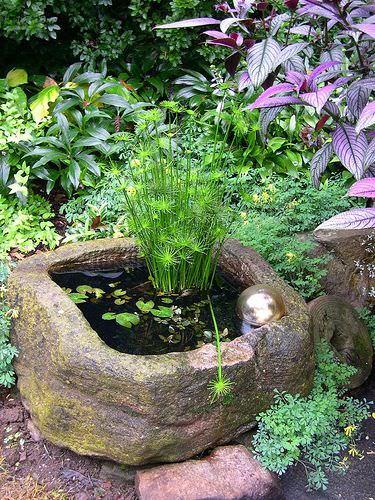
We LOVE this hypertufa tough from ‘Dirty Horticulture’… it has such an organic feel, like it’s been there 100 years! Lots of great tips on making molds as well.
Hypertufa garden seat by ‘Flat Earth Designs’ via ‘My Notting Hill‘ in Texas. Are we starting to see the versatility in this medium?

Make a hypertufa millstone for over a fountain, with help from ‘Houzz GardenWeb’!
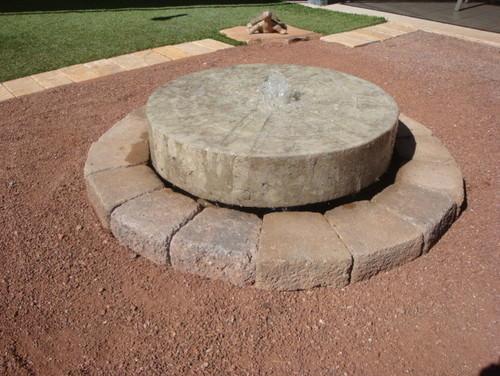
This wicker basket hypertufa is also from ‘Martha’ An easy variation, I love these for a country or traditional porch!
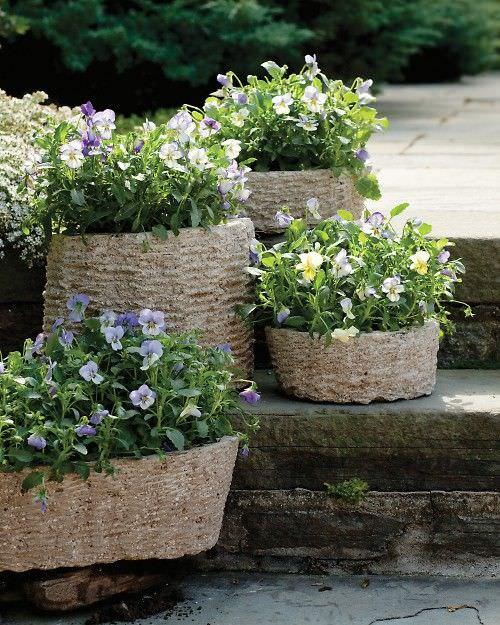
Lastly, these hypertufa containers use recycled items as molds… I really like the texture the veggie oil container made! From ‘Home Life Science’.

1
1
求助
Amanda Lynn
2017年05月22日

My boyfriend bought me a beautiful succulant arrangement. I have identified all but this one. It resembles an elephant bush l, however the stem is a light green and the leaves have a very delicate fuzz on them. Is this typical of a young EB plant? Or, is this something else??
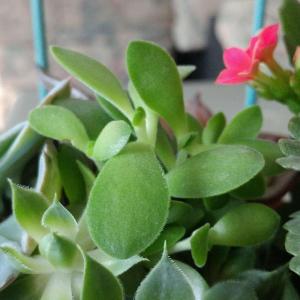

0
0
Amanda Lynn:Thank you so much! Im just starting to really get into gardening and I want to provide the best care to my little greenies that I can, but I need to know the species! lol
我是小花:The plant may be a Crassula rogersii, a polymeth, native to South Africa
文章
Micky
2017年05月22日

Learn how to grow carob tree. Growing carob tree is easy, it’s also grown as ornamental plant in the gardens.
Growing Carob is durable evergreen tree native to the Mediterranean. It has bright, green beautiful foliage, cluster of small flowers and edible pods that are used as cocoa powder substitute.
Carob pods contain about 8% protein, vitamins A and B and about one-third of calories than chocolate.
USDA Zones — 9-11
Propagation Method — Seeds
Difficulty — Easy
Soil pH — 6 – 8
Carob Tree Growing Conditions
Carob tree grows about 10 meter tall (exceptionally 15 m). It is a dioecious tree, which means each tree bears male or female flowers. Carob tree can bear up to 20 F temperature.
Carob tree has a thick and twisted trunk with a rough and brown bark. Its leaves are oval, dark green and shiny that are 12 to 30 centimeters long. Its foliage provides a welcome shade in hot countries. They form a very effective curtain against noise too.
Growing Carob from Seeds
The fresh carob tree seeds germinates quickly and easily. If you don’t find fresh seeds you can grow it from dry seeds which is scarified and soaked in water until they double in size. They can be planted in spring or fall.
Requirements for Growing Carob TreeSoil
The carob tree is a tree that grows in many soil types including hillsides with deep sandy soil or loam, even arid. It does not tolerate acidic or wet soils but requires good drainage.
Sun
Carob tree needs full sun and a position sheltered from wind.
Watering
It is resistant to drought. However, watering must be provided during dry seasons, especially if the tree is grown for its fruit.
Carob Tree Care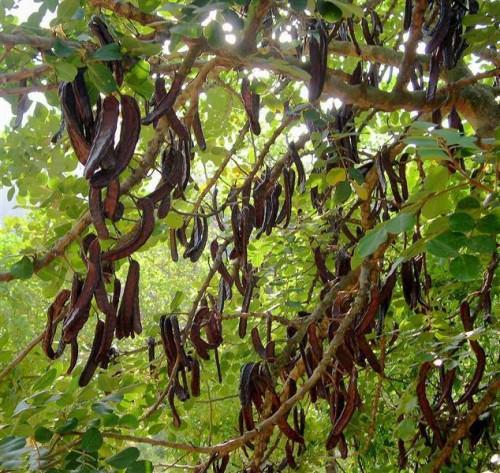
Once fully developed carob tree can withstand temperatures up to -7 ° C, but frost during flowering period can reduce or sometimes prevent fruiting. The tree is ideally grown in regions with a Mediterranean climate.
Fertilizer
Fertilizer is often unnecessary for carob trees. However, a 8-3-9 fertilizer can be applied occasionally to give plant a boost.
Pruning
Growing Carob is durable evergreen tree native to the Mediterranean. It has bright, green beautiful foliage, cluster of small flowers and edible pods that are used as cocoa powder substitute.
Carob pods contain about 8% protein, vitamins A and B and about one-third of calories than chocolate.

USDA Zones — 9-11
Propagation Method — Seeds
Difficulty — Easy
Soil pH — 6 – 8
Carob Tree Growing Conditions
Carob tree grows about 10 meter tall (exceptionally 15 m). It is a dioecious tree, which means each tree bears male or female flowers. Carob tree can bear up to 20 F temperature.
Carob tree has a thick and twisted trunk with a rough and brown bark. Its leaves are oval, dark green and shiny that are 12 to 30 centimeters long. Its foliage provides a welcome shade in hot countries. They form a very effective curtain against noise too.
Growing Carob from Seeds
The fresh carob tree seeds germinates quickly and easily. If you don’t find fresh seeds you can grow it from dry seeds which is scarified and soaked in water until they double in size. They can be planted in spring or fall.
Requirements for Growing Carob TreeSoil
The carob tree is a tree that grows in many soil types including hillsides with deep sandy soil or loam, even arid. It does not tolerate acidic or wet soils but requires good drainage.
Sun
Carob tree needs full sun and a position sheltered from wind.
Watering
It is resistant to drought. However, watering must be provided during dry seasons, especially if the tree is grown for its fruit.
Carob Tree Care

Once fully developed carob tree can withstand temperatures up to -7 ° C, but frost during flowering period can reduce or sometimes prevent fruiting. The tree is ideally grown in regions with a Mediterranean climate.
Fertilizer
Fertilizer is often unnecessary for carob trees. However, a 8-3-9 fertilizer can be applied occasionally to give plant a boost.
Pruning
0
0
求助
Aesthesiiick
2017年05月12日

does anyone know what this succulent / cactus is? leaves are thick and a bit felt like, and thorns are tiny and appear in bunches around the upper half of the plant. Plant is dark green in colour and apparently flowers form at the top in a circle. flowers are red supposedly #cactus #cactus #succulent #suncculents
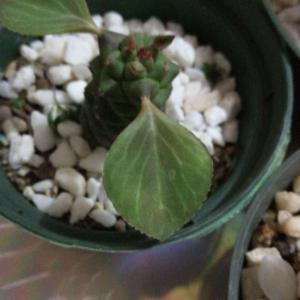

1
0
meriunkat:Monadenium Ritchiei ssp. Nymbayense
meriunkat:how interesting
Aesthesiiick:and another
Aesthesiiick:some more pictures



